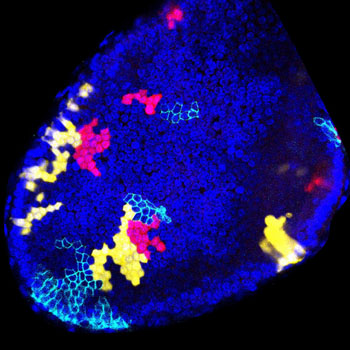Pair of Enhanced Techniques Developed for Stem Cell Lineage Tracing
By LabMedica International staff writers
Posted on 21 Jun 2016
European cell biologists have developed a pair of methods for the precise assessment of the multipotent or unipotent fate of stem cells.Posted on 21 Jun 2016
Lineage tracing has become the method of choice to study the fate and dynamics of stem cells (SCs) during development, homeostasis, and regeneration. In order to increase the tools available for lineage tracing, investigators at the Université libre de Bruxelles (Belgium) developed two novel methods to determine whether stem cells in the mammary gland and in the prostate were multipotent or unipotent during development and adult maintenance.

Image: Multipotent stem cells, responsible for the development of the prostate (Photo courtesy of Dr. C. Blanpain, Université libre de Bruxelles).
They described the two methods in the June 9, 2016, online edition of the journal Genes & Development. The first one was based on statistical analysis of multicolor lineage tracing, allowing the definition of multipotency potential to be achieved with high confidence, and the second one was based on lineage tracing at saturation to assess the fate of all SCs within a given lineage and the “flux” of cells between different lineages.
Analysis clearly revealed that, whereas the prostate developed from multipotent SCs, only unipotent SCs mediated mammary gland (MG) development and adult tissue remodeling.
"These methods offer a rigorous framework to assess the lineage relationship and stem cell fate in different organs and tissues. These techniques will become the new standard to decipher the lineage relationship in many other organs or tissues during development, tissue repair and tumor initiation," said senior author Dr. Cédric Blanpain, professor of stem cell and development biology at the Université libre de Bruxelles.
Related Links:
Université libre de Bruxelles













